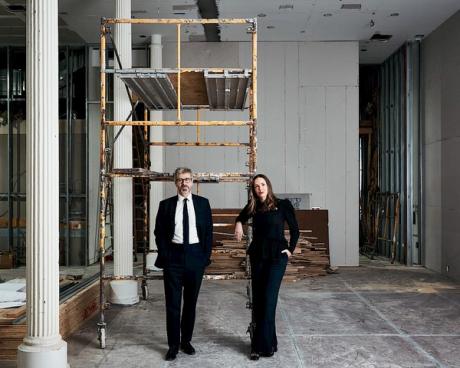
London art dealer Timothy Taylor will move his gallery from Chelsea to New York’s trendy Tribeca neighborhood on April 20, a move he says came as a “happy accident” – although it indicates a broader trend, not only among art galleries.
Over the past five years or so, the likes of mega-dealer David Zwirner and smaller companies such as Chapter Gallery, Denny Denim and Canada have flocked to Tribeca and have now reached a critical mass of around 50 galleries. Taylor thinks Tribeca is “increasingly defined by volume,” both in terms of galleries and the number of visitors to the area. “But I’m not saying there’s going to be a mass migration from Chelsea,” he adds.
Tribeca, which has also drawn Manhattan stars over the years including Robert De Niro, Meg Ryan and Leonardo DiCaprio, has a “very different feel” to the Chelsea community, says Taylor, which opened in the Uptown in 2016 as an experiment. “Tribeca spaces offer artists something different. If you’ve been exhibiting in the same space in Chelsea for 20 years, it’s pretty exciting to have a different opportunity.”
Taylor explains how he took over the Tribeca Gallery after ending up in the area by chance last summer. “I had been told by a real estate agent named Jonathan Travis to look at Tribeca, and I completely ignored him, thinking that if you were in Tribeca, you would have somehow failed in Chelsea,” the dealership says. “So I called Jonathan to let him know I was in Tribeca. He showed me a space and I made an offer the next day. It really was a total coincidence to find myself in this part of town.
The first exhibition in Taylor’s new two-story, 6,000-square-foot space is by Turkish-born abstract painter Hayal Pozanti, her first exhibition with the gallery since announcing her representation earlier this year. Over the next 18 months, Taylor will introduce a number of new artists to the gallery. Then, in September, an exhibition by the self-taught figurative painter of Thai origin Jiab Prachakul.
Along with its new recruits, Taylor aims to maintain its schedule of featuring primarily, but not exclusively, European artists. “I want to give European artists a big enough platform to be taken seriously in the US market,” he says. “I wouldn’t say that I only focus on European artists, but as a European gallery I think it’s quite important.”
Everything changes in London
As for his own base, Taylor will remain in London where he has run a gallery since 1996. He notes how the British capital has changed “quite drastically” over the past five years. “International individuals can still have properties in London, but they spend less time in the UK,” he says. “I don’t know if it’s due to Brexit or changes in international tax laws.”
The London art market, meanwhile, is “looking less towards Europe”, says Taylor, and “more looking at where the new energies are coming from”. The dealer spends a lot of time in China, Hong Kong and, increasingly, Korea, although he says there are no plans to open an outpost in East Asia.
As he says: “It’s not a huge gallery, we have a team that is more than its weight. I take a more opportunistic approach: doing exhibitions, fairs and pop-ups in other places, then leaving and coming back when I have another good idea. »
Taylor acknowledges that his method can go against the grain, but prefers to stay moderate in size and focused. “Everyone says, the more real estate you have, the more artists you can have and the more you can sell. And the more money you can make,” he says. “But that’s not my approach. I want to enjoy what I’m doing, and I want to have fun.
